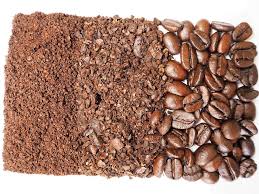According to a new report published by Allied Market Research, titled, " Flavored yogurt Market by Type, Application, and Form: Global Opportunity Analysis and Industry Forecast, 2019-2026," the global flavored yogurt market size was at $63.6 billion in 2018 and is anticipated to reach $92.3 billion by 2026, with a CAGR of 4.8% during the forecast period. The market is expected to exhibit an incremental revenue opportunity of $28.7 billion from 2018 to 2026. Strawberry, vanilla, peach and blueberry are the most popular yogurts flavors preferred by the consumers due to their characteristic aroma and taste. Flavored yogurt are the popular choice of breakfast, snack, dessert and beverage among health-conscious consumers. Due to the busy lifestyle, consumers have shifted their preference towards the consumption of convenience food products. Owing to the nutritional properties and wide range of flavors and product types available, flavored yogurt have become one of the most preferred choice of convenience food among the consumers.
The flavored yogurt market growth is propelled by the growing awareness of the health benefits of yogurt. Active and health conscious consumers have shifted their preference toward nutritional food products including flavored yogurt and other dairy products. Yogurt is a rich source of various essential nutrients including calcium, protein, phosphorus, potassium, and vitamins. It is also suitable for fortification to enhance the nutritional value of yogurt and flavor addition to enhance the taste and visual appeal of the product.
Download Sample Report: https://www.alliedmarketresearch.com/request-sample/6249
The flavored yogurt market is segmented on the basis of flavor, distribution channel, type, and region. Based on flavor, the flavored yogurt market is categorized into strawberry, vanilla, peach, blueberry, and others. Strawberry has been the most preferred choice of flavored yogurt among the consumers due to the fresh color, characteristic sweet taste and the smooth texture. The strawberry segment was valued at $25.8 billion and is expected to grow with a CAGR of 4.3% from 2019 to 2026, to reach $36.1 billion by 2026. The blueberry segment is estimated to be the fastest growing segment, with a CAGR of 5.8% during the forecast period.
On the basis of distribution channel, it is categorized into supermarket/hypermarket, convenience stores, e commerce, and others. The supermarket/hypermarket segment led the flavored yogurt market in terms of distribution channel and is expected to growth with a CAGR of 4.8% during the forecast period. The segment is expected to reach $33.8 billion by 2026. The E commerce segment is anticipated to be the fastest growing segment during the flavored yogurt market forecast. Growing smartphone penetration and growing number of consumers seeking convenient lifestyle is likely to drive the flavored yogurt market through e commerce distribution channel.
On the basis of type, the conventional segment held a significant share in the global market in 2018. However, the organic segment is expected to grow at higher CAGR, owing to increase in consumer inclination towards the organic food products. In addition, growing knowledge and awareness about the ill effects of synthetic chemicals on the health of the consumers further adds to its market attractiveness.
For Purchase Enquiry: https://www.alliedmarketresearch.com/purchase-enquiry/6249
On the basis of region, flavored yogurt industry is analyzed across North America (U.S., Canada, and Mexico), Europe (Germany, France, UK, Italy, Spain, and Rest of Europe), Asia-Pacific (China, Japan, Australia, India, and Rest of Asia-Pacific), and LAMEA (the Middle East, Latin America, and Africa). This can be attributed to high per capita consumption of flavored yogurt in majority of the countries in Europe including Germany, France, Italy, UK, among others. Consumers in the region are attracted by the new flavors, and textures of the flavored yogurts and has led to the growth of the market in the region. Furthermore, Asia-Pacific is expected to witness a highest CAGR, owing to the rising awareness of the health benefits of flavored yogurt.
Key Findings of the Flavored Yogurt Market :
- The flavored yogurt market was valued at $ 63.6 billion in 2018 and is estimated to reach $92.3 billion by 2026, growing at a CAGR of 4.8% during the forecast period.
- By type, the organic segment is estimated to witness the fastest growth, registering a CAGR of 11.6% during the forecast period.
- In 2018, by distribution channel, the supermarket/hypermarket segment held the highest share, accounting for one third of the global flavored yogurt market share.
- In 2018, Germany was the most prominent market in the Europe region and is expected to grow at a significant CAGR throughout the forecast period.
The key players profiled in this report include Danone, Nestle, Chobani LLC, General Mills, Arla Foods, Müller, Fage International S.A., Stonyfield Farm Inc., Emmi Group, and Cabot Creamery.








